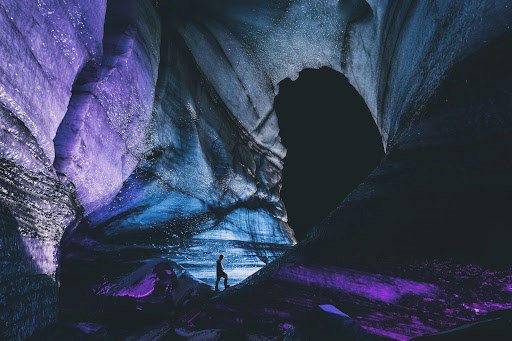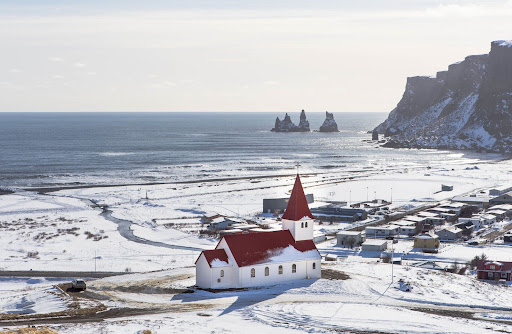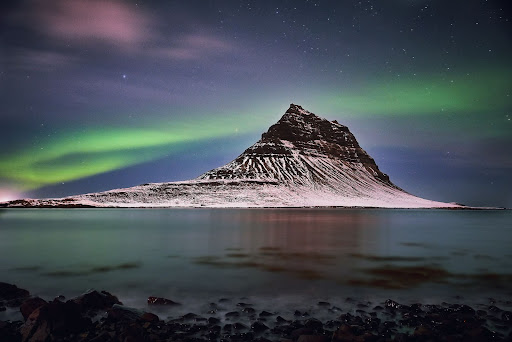Everything You Need to Know about Visiting Iceland in November
Are you looking for the perfect winter getaway? Iceland in November is nothing short of magical. With cold, snowy landscapes that are guaranteed to take your breath away, abundant wildlife to spot, and the chance to spot the Northern Lights. In this guide, we’ll cover the weather in Iceland in November, typical temperatures, and the top things to do to help you plan your trip.
Weather in Iceland in November: What to Expect
The average daily temperature in Reykjavik in November is around 3 °C. Of course, there is also a cold arctic breeze to contend with, which makes it feel much cooler. The weather in Iceland is famously changeable, and it becomes even more unpredictable during the winter months. It’s not uncommon to experience sun, rain, sleet, and wind all within 24 hours. In fact, strong winds are common, especially along the coast and in open areas, so be cautious if driving or spending extended time outdoors.
If you’re visiting Iceland in November, you should also be prepared for some snow; although it is not guaranteed, it is extremely likely. On average, there is around 8.7cm of snowfall in Reykjavík during November.
What Are the Temperatures in Iceland in November?
The average daily temperature in Reykjavík in November is around 3 °C. Of course, there is also a cold arctic breeze to contend with, which makes it feel much cooler. Inland and northern areas of Iceland are usually colder, sometimes dropping below freezing, while coastal regions tend to be milder thanks to the Gulf Stream.
Nighttime temperatures often dip to around 0 °C, with lows in northern and inland areas occasionally reaching -6 °C.
Despite the chill, November temperatures are generally manageable for outdoor activities like sightseeing, waterfall visits, and trips to chase the Northern Lights.
What to Pack for Iceland in November
If you’re wondering what you’ll need to wear to combat the cold weather in Iceland in November, here are a few things you’ll definitely want to pack:
- Thermal vests and leggings
- A good quality, thick coat
- Warm jumpers
- Comfortable, waterproof hiking boots
- Waterproof gloves
- A warm hat
- Polarised sunglasses
Remember, layers are key!
If you realise you’re without any of these items, there are some excellent Icelandic clothing stores that specialise in clothing for the climate. 66° North, ZO ON, and Icewear are just a few of the brands native to Iceland that provide warm, quality, and comfortable clothing and accessories.
Daylight Hours in November
During November, the hours of daylight in Iceland decrease from around 8 hours at the beginning of the month to approximately 5 hours by the end. Sunrise typically occurs around 9:30 am, with sunset near 4:30 pm in mid-November. This may mean that you need to organise your itinerary in such a way that certain activities that are not well-lit, such as the waterfalls, can be completed during daylight. On the bright side, the longer nights provide the ideal conditions for spotting the Northern Lights, making November a magical time to explore Iceland’s winter landscapes.
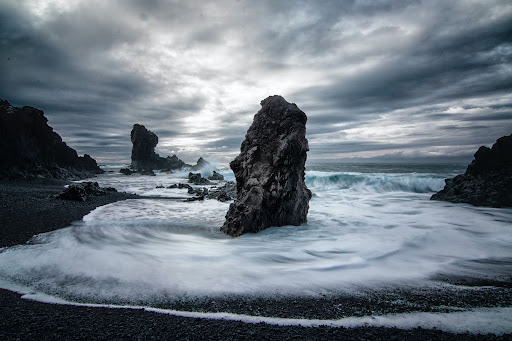
What Are the Top Things to Do in Iceland in November?
Iceland is renowned for its plethora of breathtaking attractions and unforgettable landscapes, and November is one of the best times of the year to experience them. Fewer tourists mean you can really explore to your heart’s content without the queues of summer in Iceland.
Ice Caving
In winter, ice caves form within the glaciers in Iceland. Ice caving is an activity that allows you to explore the caves for yourself. Many of the caves are located in the South of Iceland, and each year, new caves are discovered. November is a great time to visit, as the ice is typically stable enough for guided tours, but it’s important to go with a professional guide, as conditions can change rapidly.
Dog Sledding
Dog sledding is a very popular, thrilling tourist activity in Iceland, which allows you to speed through the countryside while enjoying the unforgettable winter scenery. In November, you’ll likely be able to take advantage of traveling across the crisp snow to make the experience even more surreal.
Hot Springs
The contrast between the warm, soothing water and the crisp, cold air at the relaxing hot springs in Iceland is an experience like no other. From the well-known Blue Lagoon to the surreal Seljavallalaug hot spring, there are many geothermal bodies of water to relax in after a long day of sightseeing.
Spot the Northern Lights
The Northern Lights are a natural phenomenon that many are lucky enough to see flickering and dancing above the skies in Iceland. The best months to catch a glimpse of the aurora are from September to April, which makes November one of the best months to see the lights in all of their glory.
Remember, it is never guaranteed that the Northern Lights will be visible; you can just hope that luck will be on your side during your visit.
Party at one of Iceland’s Biggest Festivals
Every November, Reykjavík hosts Iceland Airwaves, an immersive festival that showcases international and domestic acts. Typically held during the first week of the month, you can immerse yourself in the diverse lineup at venues across the city.
Confirmed artists include unheard-of up-and-coming talent as well as established stars. Want to get your hands on a ticket? Take a look at the official website for details.
Whale Watching
The wildlife in Iceland is astounding, with many fascinating species to catch a glimpse of. One of the most exhilarating wildlife trips in Iceland is whale watching. November is a particularly good time to look for orcas and humpback whales that tend to be hunting for fish in the Fjords during this time.
Of course, this is just a small taste of some of the fascinating things to do in Iceland; there are simply hundreds of activities, and you’ll certainly be spoilt for choice!
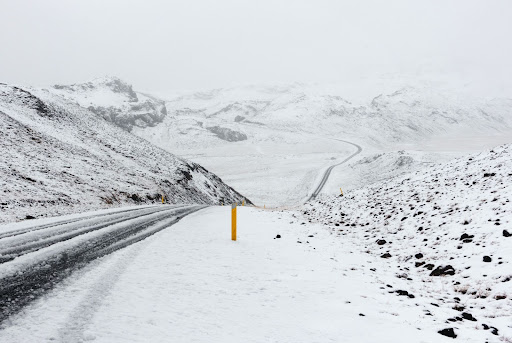
Driving in Iceland in November
Driving in Iceland is an amazing way to experience the scenery and culture that this fascinating country has to offer. However, during the winter months, driving can be quite a challenge due to the snowy, icy, and wet conditions.
Is it Safe To Drive in Iceland in November?
The main routes in Iceland, such as the Golden Circle and the Ring Road, are simple to navigate, and most experienced drivers will have no issues driving on these roads. However, the F-Roads that lead into the Highlands of Iceland become treacherous during winter and are typically impassable from October until summertime.
Before setting off on a road trip in Iceland in November, it is wise to double-check the driving conditions on road.is and remain alert at all times to the weather around you, which is liable to change at any moment.
Renting a 4x4 vehicle is highly recommended. Drive cautiously, maintain extra distance from other vehicles, and keep headlights on at all times. All our cars at Iceland Car Rental come with studded/spiked winter tires during the winter months for additional safety and peace of mind.
What Are the Pros and Cons of Visiting Iceland in November?
Visiting Iceland in November comes with its own unique set of advantages and challenges.
Pros
- See the Northern Lights: November is prime aurora season, with long nights and clear skies; your chances of spotting the phenomenon are high.
- Fewer Tourists: November is considered the off-peak travel season, which means tourist hotspots are often less crowded and sightseeing is more enjoyable.
- Winter Activities Are in Full Swing: Activities like snowmobiling and glacier hiking often start in November.
- Unique Landscapes and Photography Opportunities: Snow-dusted waterfalls, frosty black sand beaches, and frozen lakes offer striking contrasts for nature lovers and photography enthusiasts.
- Lower Prices: Off-season travel often means better deals on flights and hotels, meaning you can make your budget go further.
Cons
- Limited Daylight Hours: As previously mentioned, November days can be short, which limits your sightseeing time.
- Colder Weather: Temperatures are just a few degrees above freezing, and wind or rain can make it feel even colder. Wearing layers is essential for keeping warm.
- Some Roads and Attractions May Be Closed: Highland F-Roads and certain hiking trails are closed in November due to weather conditions. You’ll also miss out on summer-only tours.
- Limited Public Transport Options: Many rural areas have less frequent buses in winter, and timetables can be disrupted due to the weather. A rental car may be necessary for exploring beyond the capital.
Thinking of heading to Iceland in November? Our range of hire cars offers you the flexibility to explore the sights and attractions at your own pace.

